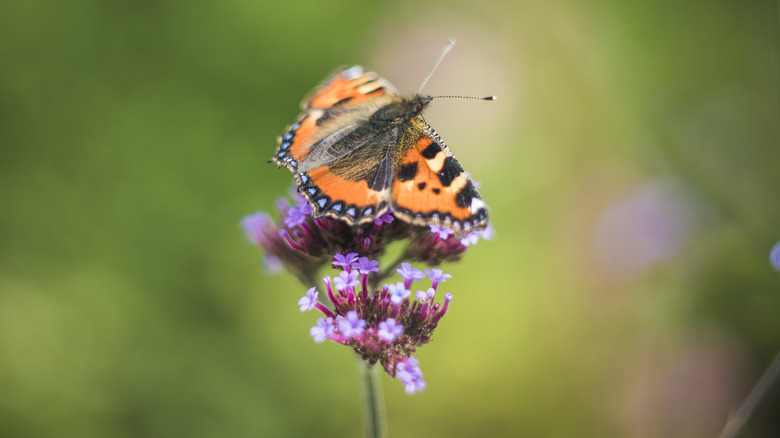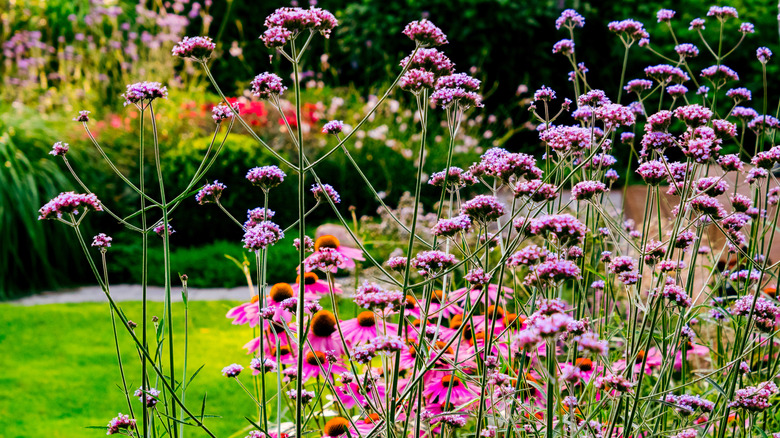Attract Birds And Butterflies With A Self-Seeding Flower That Regrows Itself Each Year
Few things say "healthy and thriving garden" quite like the cheerful sound of birdsong and the fleeting flashes of bright-hued butterflies. If you're looking to create that kind of vibrant, nature-filled outdoor space, consider adding one powerhouse plant to your yard: Glandularia bipinnatifida, better known as prairie verbena or Dakota vervain. It's a beautiful, low-maintenance way to bring pollinators flocking.
The vibrant purple prairie verbena is a self-seeding flower you can plant in your garden for continuous color year after year. Native to southern and central U.S. states (it thrives in USDA Zones 5 to 8), the prairie verbena has delicate clusters of violet, lilac, and lavender flowers that not only bring some much-needed color to your yard from March through October but are also known for attracting birds, butterflies, and other pollinators thanks to it being a nectar source.
A perfect addition to any wildflower-inspired backyard, and one of the best purple plants for your flower garden, this hardy perennial is as low-maintenance as it is beautiful. Prairie verbenas handle drought like a champ, spread naturally without becoming a nuisance, and, once established in the ground, need only the occasional drink during especially dry spells. (Newly planted verbenas and those planted in pots, window boxes, or hanging baskets will need more watering.) It's an ideal choice for anyone looking to attract pollinators while keeping their garden effortlessly pretty.
How to plant the prairie verbena for effortless self-seeding
To grow the prairie verbena in your garden, plant seeds or transplants in full sun and well-draining soil – this flower is not a fan of soggy roots. You can sow seeds directly outdoors in late spring or early summer; just press them lightly into the soil without burying them too deep.
One of the best things about prairie verbena (besides it being one of the best plants for your pollinator garden) is that once it's in your garden, this perennial will come back year after year, no replanting required. Thanks to its self-seeding nature, this wildflower gently reestablishes itself each season, offering fresh blooms with little to no help. Just let the flowers go to seed in late summer or fall, and nature will handle the rest.
The prairie verbena's sprawling habit makes it perfect for borders or free-growing areas, where it can self-seed and fill in gaps with its vibrant color. And because it's native to the U.S., it's well-adapted to local conditions and supports native pollinators, so your garden stays both beautiful and ecologically balanced.

